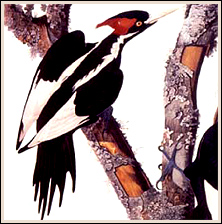Over the years while talking with other photographers either via Facebook, or during a workshop, or simply having questions tossed my way there are a few misconceptions about photography that continue to come up. These misconceptions can in fact hinder your ability to progress your photographic skill sets. Let's take a look at them.
Number 1: You should always try to capture a scene exactly the way you see it. This first misconception is probably the most common one and is also probably the one that is most difficult to let go of. Sometimes capturing a photograph of something exactly the way you see it visually is just fine, maybe even in most cases that is what you might want to do. However, clinging to this concept all the time can hinder your ability to capture emotion, or feeling, or mood. You see, your eyes see light differently than the camera does. Our eyes and brain are marvelous sensors that work together to interpret visible light in such a way as to render it as a normal view. The camera on the other hand looks at light reflecting off of an object and wants to interpret it as a middle tone value. Meter off a white wall or field of snow and the camera will turn it gray. Meter off a black wall or a very dark object and the camera will also turn it gray. This applies to all colors, not just black or white, and every color has a middle tone value. Knowing this gives you a tremendous advantage in that you can use it to create and capture mood. You can also use your camera's exposure compensation options, that +/- button, to brighten or darken the exposure often turning what might appear to be an ordinary looking situation into something with a great deal more appeal and energy.
 |
| As Seen Visually |
 |
| +0.0 Compensation - Middle Tone Values |
 |
| -1.0 Compensation - 1 stop darker than middle tone |
The three images above are good examples. They were taken a few seconds apart in the same light. The first one represents the scene pretty close to what the scene looked like if you were standing there looking at it. Although the sun had already set, the sky was very bright with a gradual darkening toward the horizon. The second photograph represents an image allowing the camera to do what it wants to do...it shifted the light toward a middle tone value which created a lot more mood using the same light. The third image was taken using a - 1.0 exposure compensation reducing the exposure by one full stop below the middle tone value. A simple adjustment like this created a great deal of energy and mood. Same light conditions, three different results.
Had I relied simply on what I saw visually, I would never had taken the photographs. But, understanding how the camera sees light, and looking beyond the obvious, I was able to create an image that moved well past the natural lighting conditions.
Number 2: Your camera will always give you the correct exposure. This is another tough one for novice photographers to let go of and to grasp. Your camera's metering system regardless of which mode it is in will simply give you an average. Most digital cameras can use several types of metering modes. Matrix, Center Weighted, and Spot metering are the most common. Matrix will use a number of points scattered across the frame to determine the exposure setting. Center Weighted does the same thing except it places a higher value on the center portion of the frame. Spot metering allows you to select a single point as your metering point. All three have their advantages and disadvantages.
The thing to remember is that the exposure setting your camera selects is rendered as an average, and is related to the first misconception. This may or may not be an acceptable exposure for a given lighting condition. A light object sitting in front of a dark background will often not be exposed properly. The dark background will confuse the meter causing the exposure selection to be too light or bright. That is why if you use matrix metering while photographing the moon, the moon will often be way overexposed because the dark background will skew the exposure. Spot metering on the moon itself works much better for a situation like that one. A bright background does the same kind of thing only in reverse and will often cause a dark subject to be under exposed.
Think of your metering system as a way of getting a suggested or starting exposure. Then, based on the lighting situation, you can apply exposure compensation settings up or down to adjust the exposure to render the image like you want it. Simply setting your camera on a Program mode and letting it make all of the decisions will in most cases give you average looking photographs.
Number 3: It is cheating to apply post processing to your images. I still run across photographers who consider themselves purists and will only use photographs straight out of the camera as is. Nothing wrong with that philosophy per se, however very few digital images will come out of the camera not requiring some kind of post processing tweak. Sometimes you get lucky, but most digital images can benefit from some kind of minor tweaks. It is not cheating. Ansel Adams, possibly the best known American photographer, tweaked all of his photographs in the darkroom using dodging and burning techniques. His most famous images were not printed straight from the negative. In fact, most of his negatives if used as a straight print created rather ordinary looking prints. His compositions were wonderful. His exposures were dead on. His post processing, although done using chemicals and mechanical manipulation, turned his images into masterpieces.
He would have embraced digital photography and especially PhotoShop or any of the other image processing software now available. Post processing is a tremendous tool and can take a marginal image and turn it into a great image. Sometimes an image looks rather ordinary in color, but converting it to black and white and using a little creative cropping, that same image will be transformed into a wall hanger. I will often take an image with the intent of converting it to black and white.
 |
| Original |
 |
| Cropped Black and White |
When I capture a photograph, I always attempt to get the exposure and composition as close as I can to perfection in camera. Even so, the majority of my images will undergo at least some simple tweaks like brightness, contrast, sharpening, and sometimes color correction with a small amount of saturation boost both up and down. I always encourage novice photographers to learn some basic post processing skills. You can find a lot of videos online that cover just about anything you need to know.
There are other misconceptions about photography, but these three tend to be the ones I see and hear about all the time. It is okay to experiment, to try new things, to push your photography to a new level, and to question the status quo. The worst thing you can do is to allow yourself to stagnate and become trapped by a lack of understanding and misinformation. Take charge of your photography. Let go of preconceived notions that you must do things a certain way. Only by doing so will you allow yourself to expand your photographic world.














































